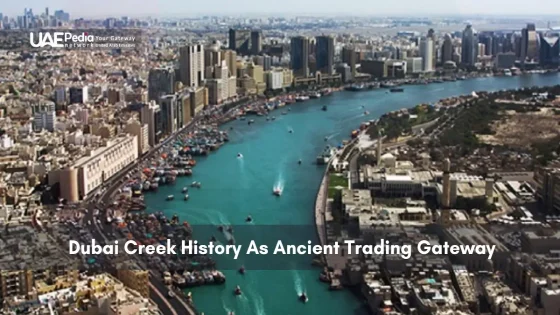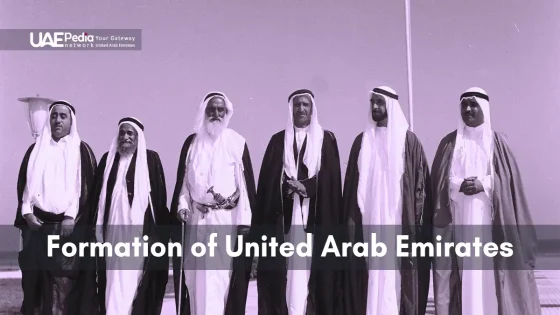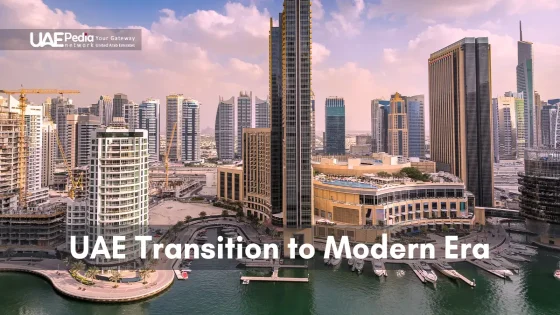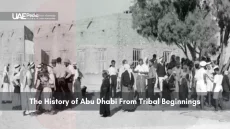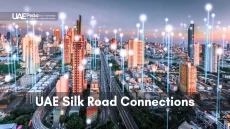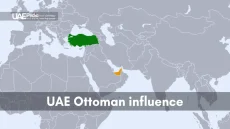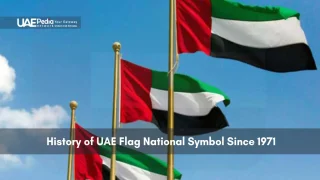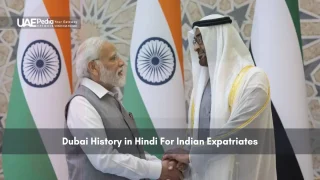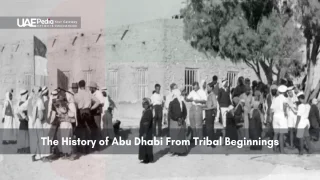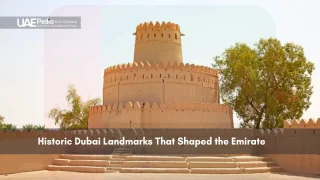What if we told you a winding saltwater channel once fueled the entire economy of a global metropolis? At 25°15′21″N, 55°19′0″E, this 14-kilometer natural inlet—stretching 200 meters wide and 10 meters deep—became the lifeline connecting desert tribes to the world.
Long before skyscrapers, the Bani Yas tribe settled here in the 1800s. They transformed the sheltered waters into a bustling port where pearls, spices, and gold flowed between Bur Dubai and Deira. Dhows from India and East Africa docked daily, their sails dotting the horizon like floating market stalls.
This wasn’t just a waterway—it was a cultural crossroads. The Al Maktoum dynasty established its roots here, using the creek’s strategic position to build trade networks across the Arabian Gulf. Even today, the Ras Al Khor Wildlife Sanctuary whispers of the ecosystem that sustained early settlers.
Quick insights:
- ● Natural harbor that shaped Dubai’s identity as a global trade hub
- ● Evolving from fishing villages to modern marvels while preserving heritage
Setting the Scene: The Early Days of Dubai Creek
Picture a sun-drenched waterway where mangroves sway and seabirds skim turquoise shallows. This sheltered inlet—with its calm currents and sandy banks—beckoned wanderers long before modern skylines emerged. Here, survival and opportunity flowed with the tides.
Nature’s Blueprint for Prosperity
The Bani Yas tribe recognized the perfect storm of resources: freshwater springs mingling with saltwater created fertile fishing grounds. Natural breakwaters formed by coral reefs protected wooden dhows from harsh waves. Traders from distant shores soon followed, drawn by the promise of safe harbor.
| Early Trade Goods | Transport Methods | Key Locations |
|---|---|---|
| Dates & Fish | Foot Caravans | Bur Dubai Side |
| Pearls | Wooden Dhows | Deira Wharves |
| Textiles | Camel Trains | Khor Wildlife Sanctuary |
First Footprints on Sandy Shores
Families built palm-frond homes along the western banks—now called Bur Dubai—using mud bricks from nearby deposits. Morning rhythms revolved around net-mending and bartering at makeshift docks. You can almost hear the chatter of merchants negotiating deals for dried fish and handwoven fabrics.
By the 18th century, this ancient trading hub buzzed with languages from Zanzibar to Sindh. Simple piers evolved into loading zones where spices changed hands under the watchful eyes of tribal leaders. The creek wasn’t just a port—it became the region’s beating heart.
dubai creek history and Its Role in Ancient Maritime Trade
Imagine plunging into warm Gulf waters, hands scrambling for nature’s hidden treasures. Before the 1930s cultured pearl revolution, divers here harvested oysters from dawn till dusk—each shell a potential fortune. This underwater gold rush transformed the area into a thriving port, with merchants from Mumbai to Zanzibar docking their vessels.
Diving for Dollars
Pearling crews worked April through September, braving jellyfish and depth sickness. A single season could yield enough gems to fund entire neighborhoods. As one trader noted: “The creek didn’t just sparkle with sunlight—it glittered with possibility.”
Sails That Carried Dreams
Shipbuilders crafted dhows using teak wood and coconut-fiber ropes. These wind-powered workhorses transported pearls to Bombay and returned laden with spices. Check out how they stacked up:
| Dhow Type | Capacity | Key Routes |
|---|---|---|
| Boom | 150 Tons | Persian Gulf to India |
| Baghlah | 300 Tons | East Africa to Deira |
| Jaliboot | 50 Tons | Coastal Fishing Villages |
By the 1950s, dredging projects deepened the waterway for modern ships. Yet the Gold Souk still echoes with haggling traditions born from those salty trading days. Next time you admire Bur Dubai’s architecture, remember—those walls were literally built on pearls.
Transformative Developments in the 20th Century
Ever wonder how a centuries-old trading route became a 20th-century superhighway? The answer lies in concrete, vision, and a lot of dredging. By the 1950s, this saltwater channel faced a critical choice: evolve or fade into obsolescence.
Infrastructure Upgrades and Dredging Milestones
The 1961 dredging project marked a turning point. Engineers deepened the waterway to 11 meters, allowing cargo ships to glide where dhows once dominated. One worker recalled: “We didn’t just move sand—we reshaped the city’s destiny.”
Three game-changing upgrades followed:
- ● Steel-reinforced breakwaters (1964) that tamed tidal surges
- ● Expansion projects in the 1970s doubling cargo capacity
- ● Business Bay’s 2002 extension linking the area to Zayed Road
Key Landmarks: Al Maktoum Bridge and Beyond
When the Al Maktoum Bridge opened in 1963, it became the first permanent crossing between Bur Dubai and Deira. This six-lane marvel didn’t just connect neighborhoods—it fused tradition with modernity. Check its impact:
| Feature | Pre-1963 | Post-1963 |
|---|---|---|
| Daily Crossings | Ferries: 500 | Vehicles: 25,000+ |
| Travel Time | 45 mins | 3 mins |
Today, the bridge stands as a silent witness to progress—its arches framing both historic souks and glass towers. As the waterway stretched toward the Persian Gulf, it proved ancient trade routes could dance with container ships.
Cultural and Architectural Legacies Along the Creek
Step into a living gallery where past and present share the same skyline. Along these storied banks, coral-stone buildings rub shoulders with avant-garde designs—a testament to a city that honors its roots while racing toward tomorrow.
Heritage of Bur Dubai and Deira
Wander Al Fahidi’s labyrinthine alleys, where wind towers still catch desert breezes like they did 150 years ago. “These walls remember pearl divers and spice traders,” says a local artisan shaping pottery near the centuries-old forts. Don’t miss the gold souk’s glittering arcades—haggling here feels like stepping into a time machine set to 1905.
Traditional Structures Meet Modern Innovations
Just west of Deira’s spice-scented lanes, the Dubai Creek Golf & Yacht Club reimagines tradition. Its sail-shaped clubhouse mirrors dhow silhouettes, while solar panels power its fairways. Nearby, Ras Al Khor’s flamingo flocks contrast with Business Bay’s glass titans—proof that nature and progress can coexist.
Three must-see contrasts:
- ● Al Seef District’s faux-aged façades hiding Wi-Fi-ready cafes
- ● Heritage House Museum’s courtyard cooling systems vs. skyscraper AC
- ● Abra boats ferrying commuters past floating seafood restaurants
Economic Impact: Dubai Creek’s Influence on Regional Trade
How did a modest waterway become a powerhouse of global commerce? The answer lies in strategic upgrades and relentless reinvention. This channel now handles cargo worth billions annually—but its journey from fishing boats to container ships reveals how vision fuels prosperity.
From Pearl Barges to Cargo Giants
In the 1950s, the waterway processed 500 dhows monthly. Today, over 2,400 modern vessels dock yearly at Port Saeed. A port official notes: “We didn’t just deepen the channel—we rewrote the rules of regional commerce.”
| Era | Ships per Year | Key Goods | Economic Impact |
|---|---|---|---|
| 1950s | 6,000 dhows | Pearls, spices | $12M annual trade |
| 2020s | 2,400+ vessels | Electronics, machinery | $9B+ annual trade |
Dredging projects in the 1960s tripled cargo capacity. Business Bay’s 2002 extension then linked the area to major highways, creating a 24/7 trade corridor. You can still spot wooden abras ferrying tourists past skyscrapers—proof that heritage and progress sail together.
Three modern economic engines drive growth:
- ● Business Bay’s corporate towers generating $1.2B yearly
- ● Dubai Creek Golf & Yacht Club attracting 300,000 visitors annually
- ● Ras Al Khor’s wildlife sanctuary balancing ecology with urban sprawl
This transformation didn’t just boost shipping—it sparked a hospitality boom, tech investments, and mixed-use developments. Next time you cross Al Maktoum Bridge, remember: those waters below built a city that trades with the world.
Looking Back and Moving Forward: Celebrating Dubai Creek’s Enduring Legacy
Ever stood where desert sands meet urban ambition? This waterway’s story stretches from humble fishing camps to visionary megaprojects. Al Seef’s revitalized promenade now mirrors traditional souks, while the upcoming Dubai Creek Tower aims to pierce clouds at 1 kilometer tall—proof that roots anchor growth.
Modern marvels like Dubai Creek Harbour honor the area’s DNA as a crossroads. The coastal trading posts of yesteryear evolved into Business Bay’s glass titans, yet abras still ferry dreamers across turquoise waters. Heritage whispers through Ras Al Khor’s flamingos and wind towers in Al Fahidi.
Three signs of timeless vitality:
- ● Creek Golf & Yacht Club blending nautical heritage with luxury
- ● Zayed Road’s skyline framing dhows loaded with electronics
- ● Night markets where saffron scent mingles with future-forward energy
Come walk these banks. Touch coral-stone walls that remember pearl divers, then marvel at tomorrow’s towers. This living channel doesn’t just connect neighborhoods—it bridges centuries.
The Bani Yas tribe established one of the earliest settlements here in the 18th century, drawn by the natural harbor’s potential for fishing and trade. Their legacy lives on in neighborhoods like Al Fahidi, where wind-tower architecture still whispers tales of pre-oil ingenuity.
Before skyscrapers, dhows laden with pearl divers sailed from these waters. The creek became a lifeline for merchants trading Gulf pearls with India and East Africa—a hustle that laid the groundwork for Dubai’s reputation as a regional trading powerhouse.
The 1950s dredging project deepened the waterway, allowing larger vessels. Then came Al Maktoum Bridge in 1963—Dubai’s first crossing—linking Bur Dubai and Deira. These upgrades turbocharged trade, setting the stage for the city’s explosive growth.
Don’t miss the Dubai Museum in Al Fahidi Fort, the last standing 18th-century structure. Across the creek, Deira’s spice and gold souks buzz with old-world energy, while abras (water taxis) still ferry commuters just as they did generations ago.
Though Jebel Ali port handles mega-ships, the creek still thrives with dhows shipping goods to Iran and beyond. Its banks now mix tradition with innovation—think the sleek Dubai Creek Harbour development rising beside historic neighborhoods.
